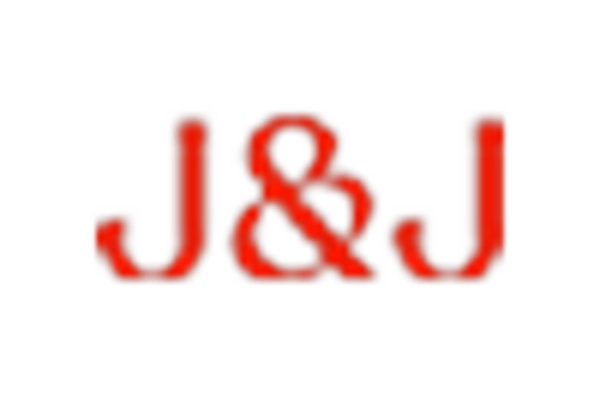Rising Incidence of Spinal Disorders
The increasing prevalence of spinal disorders, such as degenerative disc disease and spinal stenosis, is a primary driver for the Spinal Non-Fusion Device Market. As populations age, the incidence of these conditions rises, leading to a greater demand for effective treatment options. According to recent data, spinal disorders affect millions worldwide, prompting healthcare providers to seek innovative solutions. Non-fusion devices offer alternatives to traditional fusion surgeries, which can be more invasive and carry higher risks. This shift towards non-fusion solutions is likely to continue as patients and surgeons alike recognize the benefits of preserving motion and reducing recovery times. Consequently, the Spinal Non-Fusion Device Market is expected to expand as more patients seek these less invasive options.
Shift Towards Minimally Invasive Surgery
The trend towards minimally invasive surgical techniques is reshaping the Spinal Non-Fusion Device Market. Surgeons increasingly prefer procedures that reduce tissue damage and promote quicker recovery times. Non-fusion devices are often designed for use in minimally invasive surgeries, which can lead to shorter hospital stays and less postoperative pain for patients. This shift is supported by clinical evidence indicating that minimally invasive approaches can yield comparable or superior outcomes to traditional methods. As more healthcare facilities adopt these techniques, the demand for non-fusion devices is likely to rise. The Spinal Non-Fusion Device Market is thus positioned to grow as surgical practices evolve to prioritize patient comfort and recovery.
Technological Innovations in Device Design
Technological advancements in the design and functionality of spinal non-fusion devices are significantly influencing the Spinal Non-Fusion Device Market. Innovations such as dynamic stabilization systems and expandable interbody devices enhance the effectiveness of treatments while minimizing complications. These devices are engineered to provide stability without the need for fusion, allowing for greater mobility post-surgery. The introduction of advanced materials and imaging technologies has also improved surgical outcomes and patient satisfaction. As these technologies evolve, they are likely to attract more healthcare providers to adopt non-fusion techniques, thereby driving market growth. The Spinal Non-Fusion Device Market stands to benefit from ongoing research and development efforts aimed at refining these devices.
Regulatory Support and Reimbursement Policies
Supportive regulatory frameworks and favorable reimbursement policies are essential drivers for the Spinal Non-Fusion Device Market. Governments and health authorities are increasingly recognizing the value of non-fusion devices in improving patient outcomes and reducing healthcare costs. As a result, there is a trend towards establishing reimbursement pathways for these innovative treatments, making them more accessible to patients. This regulatory support encourages manufacturers to invest in research and development, further enhancing the market landscape. The Spinal Non-Fusion Device Market is expected to benefit from these favorable conditions, as they facilitate the introduction of new products and expand the market reach of existing devices.
Increasing Awareness and Acceptance of Non-Fusion Options
There is a growing awareness among patients and healthcare professionals regarding the benefits of non-fusion spinal devices, which is driving the Spinal Non-Fusion Device Market. Educational initiatives and patient advocacy groups are playing a crucial role in disseminating information about the advantages of non-fusion techniques, such as reduced recovery times and preservation of spinal motion. As patients become more informed, they are more likely to seek out these alternatives to traditional fusion surgeries. This shift in patient preference is prompting healthcare providers to expand their offerings of non-fusion solutions. Consequently, the Spinal Non-Fusion Device Market is likely to experience increased demand as acceptance of these innovative treatments continues to grow.

















Leave a Comment